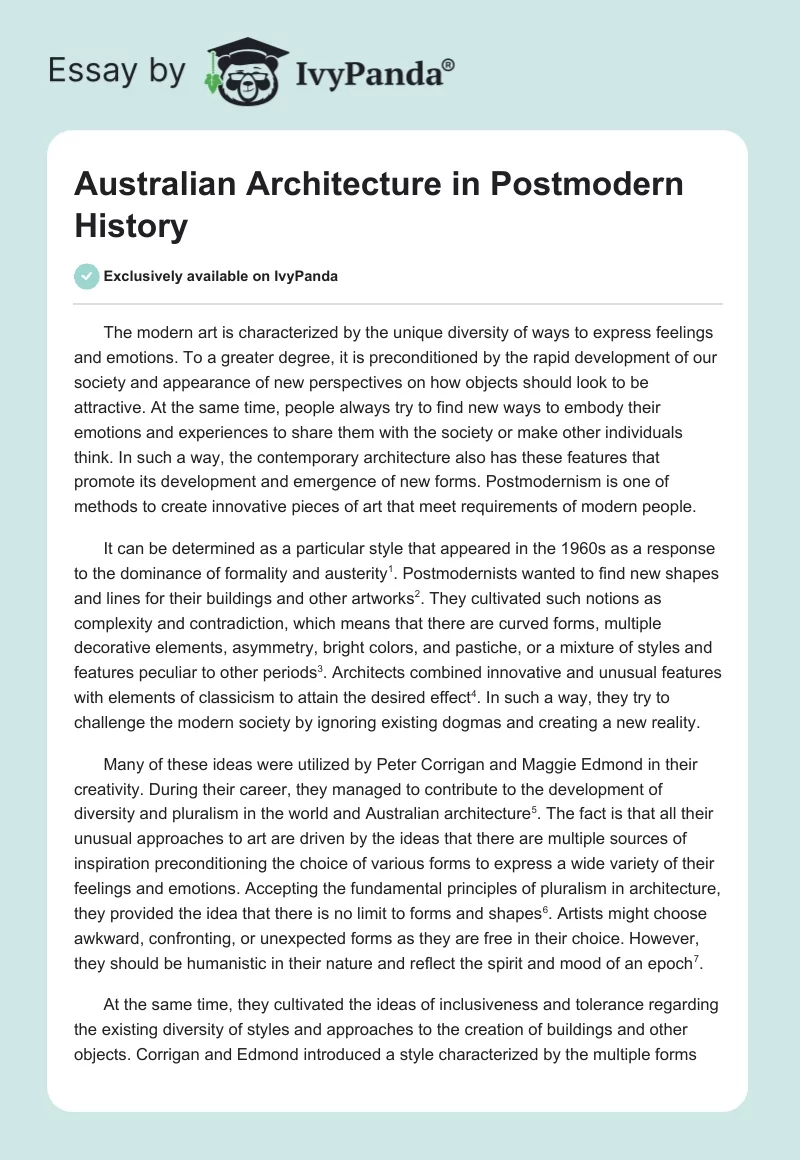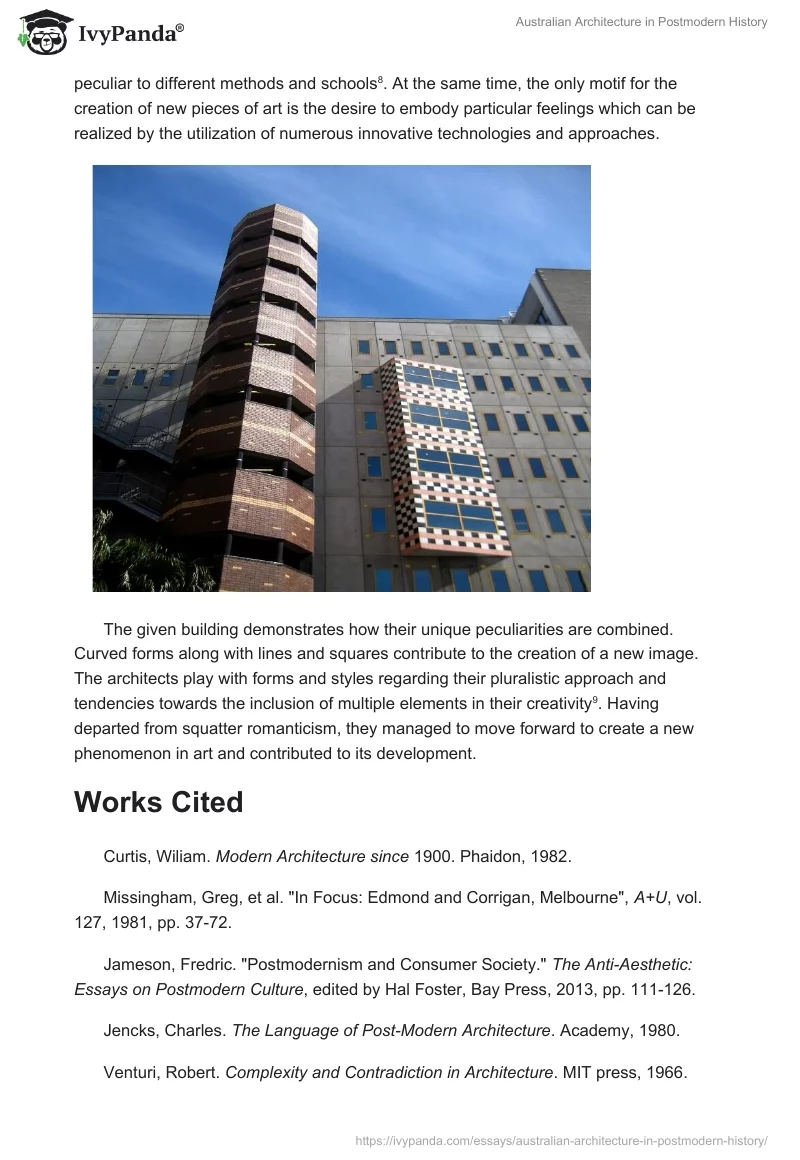The modern art is characterized by the unique diversity of ways to express feelings and emotions. To a greater degree, it is preconditioned by the rapid development of our society and appearance of new perspectives on how objects should look to be attractive. At the same time, people always try to find new ways to embody their emotions and experiences to share them with the society or make other individuals think. In such a way, the contemporary architecture also has these features that promote its development and emergence of new forms. Postmodernism is one of methods to create innovative pieces of art that meet requirements of modern people.
It can be determined as a particular style that appeared in the 1960s as a response to the dominance of formality and austerity. Postmodernists wanted to find new shapes and lines for their buildings and other artworks. They cultivated such notions as complexity and contradiction, which means that there are curved forms, multiple decorative elements, asymmetry, bright colors, and pastiche, or a mixture of styles and features peculiar to other periods. Architects combined innovative and unusual features with elements of classicism to attain the desired effect. In such a way, they try to challenge the modern society by ignoring existing dogmas and creating a new reality.
Many of these ideas were utilized by Peter Corrigan and Maggie Edmond in their creativity. During their career, they managed to contribute to the development of diversity and pluralism in the world and Australian architecture. The fact is that all their unusual approaches to art are driven by the ideas that there are multiple sources of inspiration preconditioning the choice of various forms to express a wide variety of their feelings and emotions. Accepting the fundamental principles of pluralism in architecture, they provided the idea that there is no limit to forms and shapes. Artists might choose awkward, confronting, or unexpected forms as they are free in their choice. However, they should be humanistic in their nature and reflect the spirit and mood of an epoch.
At the same time, they cultivated the ideas of inclusiveness and tolerance regarding the existing diversity of styles and approaches to the creation of buildings and other objects. Corrigan and Edmond introduced a style characterized by the multiple forms peculiar to different methods and schools. At the same time, the only motif for the creation of new pieces of art is the desire to embody particular feelings which can be realized by the utilization of numerous innovative technologies and approaches.

The given building demonstrates how their unique peculiarities are combined. Curved forms along with lines and squares contribute to the creation of a new image. The architects play with forms and styles regarding their pluralistic approach and tendencies towards the inclusion of multiple elements in their creativity. Having departed from squatter romanticism, they managed to move forward to create a new phenomenon in art and contributed to its development.
Works Cited
Curtis, Wiliam. Modern Architecture since 1900. Phaidon, 1982.
Missingham, Greg, et al. “In Focus: Edmond and Corrigan, Melbourne”, A+U, vol. 127, 1981, pp. 37-72.
Jameson, Fredric. “Postmodernism and Consumer Society.” The Anti-Aesthetic: Essays on Postmodern Culture, edited by Hal Foster, Bay Press, 2013, pp. 111-126.
Jencks, Charles. The Language of Post-Modern Architecture. Academy, 1980.
Venturi, Robert. Complexity and Contradiction in Architecture. MIT press, 1966.


